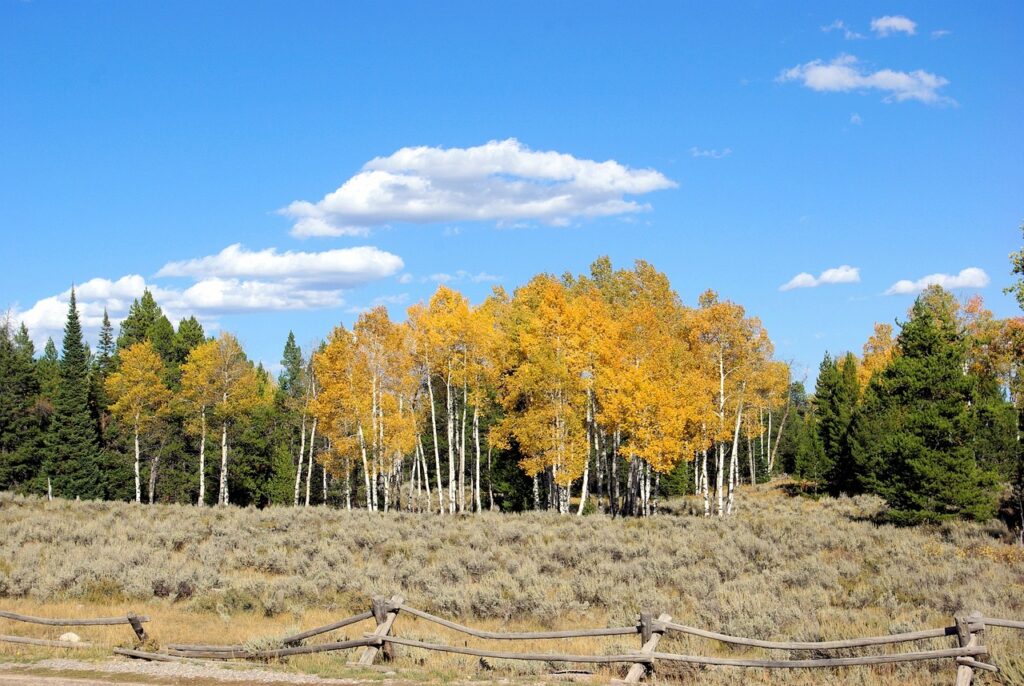
Aspen trees thrive best when planted in the right conditions, which are crucial for long-term health and vitality. These beloved deciduous trees prefer full to partial sunlight and well-draining soil with a pH level between 5.5 and 6.5. Proper spacing is essential—typically 15 to 20 feet for ornamental landscapes, though they can be planted closer when used as windbreaks. During the initial growth period, weekly deep watering and effective mulching help promote strong root development. Unfortunately, many beginners underestimate the importance of site selection and early root care, often resulting in poor growth or early decline. For a more detailed guide on planting aspen trees, be sure to follow expert-recommended strategies to ensure vibrant, healthy trees for years to come.
Understanding Aspen Root Systems and Growth Patterns
Aspen trees possess one of the most distinctive root systems in the botanical world. Unlike most tree species, aspens develop extensive lateral root networks that can extend up to 100 feet from the parent tree. These roots produce clonal suckers, creating genetically identical stems that emerge as new trees.
This growth pattern enables aspens to form large colonies or “clones” connected underground. The root system remains viable even after surface trees die, allowing rapid regeneration following disturbances like fire. When planting aspens, allocating sufficient space for root expansion is critical, as constrained areas will inhibit their natural growth pattern and potentially trigger invasive spreading into unintended zones.
Selecting the Ideal Location for Your Aspen Grove
With an understanding of their extensive root systems, proper site selection becomes a fundamental consideration for successful aspen cultivation.
Aspens thrive in locations receiving full to partial sunlight with well-draining, slightly acidic soil (pH 5.5-6.5). Select sites away from structures, as spreading roots can damage foundations and utilities. Northern or eastern exposures are preferable in warmer regions to reduce heat stress.
Ideal locations feature consistent moisture availability without waterlogging. Elevations between 5,000-10,000 feet typically provide suitable growing conditions. Consider microclimates that offer protection from desiccating winds while allowing adequate air circulation to minimize fungal issues.
Soil Preparation and Ph Requirements
Proper soil preparation represents the foundation for successful aspen establishment, directly influencing long-term vigor and root development. Aspens thrive in slightly acidic to neutral soils with pH ranges of 6.0-7.5. Before planting, conduct soil tests to determine existing pH levels and nutrient deficiencies.
Incorporate organic matter to a depth of 12-18 inches to improve drainage in clay soils or water retention in sandy conditions. For alkaline soils above pH 7.5, amend with elemental sulfur or acidic organic materials like pine needles. Avoid excessive fertilization during initial planting, which can damage developing root systems and decrease drought tolerance.
Proper Planting Techniques and Spacing
Successful establishment of aspen trees depends greatly on precise planting techniques and appropriate spacing considerations. Plant bare-root aspens when dormant, while container-grown specimens can be installed throughout the growing season. Dig holes twice the width of the root ball and at equal depth. Spacing requirements vary by purpose: 15-20 feet between specimens for ornamental stands, 8-10 feet for windbreaks, and 6-8 feet for rapid canopy development and erosion control. Position trees vertically with root flares slightly above grade level. Backfill with native soil, water thoroughly, and apply 2-3 inches of mulch, keeping it away from trunks.
Watering and Mulching Strategies for Establishment
Newly planted aspen trees require consistent moisture management during their first two growing seasons to develop robust root systems. Water deeply once weekly, delivering 5-10 gallons per tree, adjusting for precipitation. Increase frequency during drought conditions.
Apply a 3-4 inch layer of organic mulch in a 3-foot diameter around each tree, maintaining a 2-inch gap between mulch and trunk to prevent rot. Wood chips, shredded bark, or pine straw effectively retain soil moisture, regulate temperature, and suppress competing vegetation.
Reduce watering frequency in fall to encourage dormancy, then resume normal schedule in spring until establishment is complete.
Managing Suckers and Long-Term Maintenance
Aspen trees naturally produce root suckers that emerge from the soil around the parent tree, a characteristic that requires strategic management for healthy development. Prune excessive suckers annually, retaining only robust specimens spaced at least 10 feet apart to prevent overcrowding.
Long-term maintenance includes monitoring for cytospora canker and bronze leaf disease through regular inspections. Apply fungicide treatments preventatively in spring for susceptible specimens. Remove infected branches promptly, cutting 6-8 inches below visible damage.
Fertilize established aspens triennially with a balanced, slow-release formula during dormancy. Maintain a 3-inch mulch ring, renewing as needed while keeping mulch 4 inches from the trunk.











